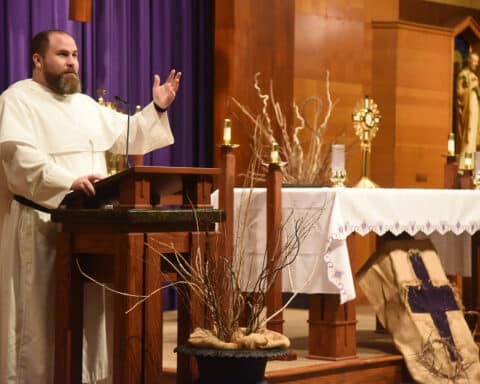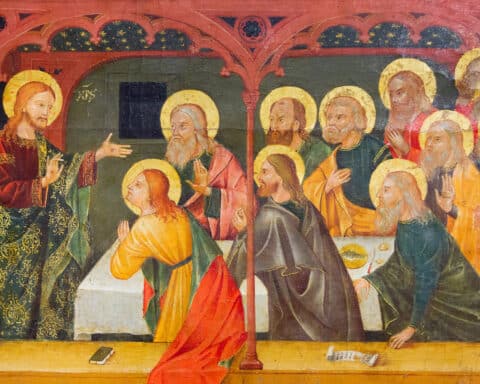“Christ is risen!” “Truly, he is risen!”
I have always loved this Easter greeting, used by our Greek-speaking brothers and sisters during Easter-tide. This greeting seems to be an especially fitting response to our readings for this Sunday, the Easter Octave. In the Gospel reading for this Sunday, we watch and listen as Thomas encounters the risen Lord, who, after bearing his wounds to Thomas, tells him, “Blessed are those who have not seen and yet have believed.” In an extension of this statement, John the Evangelist then turns to his readers and says, “[this was] written that you may come to believe.”
John hopes his readers respond with an Easter-tide greeting: “Christ is risen!” “Truly, he is risen!”
But, for those readers feeling more like Thomas, John has layered this scene with a meditation on faith, “that you may come to believe.”
For example, if you are like me, you have wondered, “But did Thomas put his finger into Christ’s hands or his hand into Christ’s side?” The text allows us to wonder about this. To touch Christ’s wounds would have been even more than seeing! It would have been to know the Lord by the touch! Maybe one could think: “If I had been there to touch his hands and his side, then, yes, I would believe. It would be easy to believe if I had touched his wounds!”
| April 7 – Second Sunday of Easter, Sunday of Divine Mercy |
|---|
|
Acts 4:32-35 Ps 118:2-4, 13-15, 22-24 1 Jn 5:1-6 Jn 20:19-31 |
Alongside this, John goes on to emphasize Thomas’ “seeing.” Christ offers his hands and his side to Thomas’ touch, yes, but he also then asks Thomas: “Have you come to believe because you have seen me?” In response, maybe one could think: “If I had been there even just to see the risen Lord and to behold his wounds, then, yes, I would believe. It would be easy! I would have seen him with my own eyes.”
Not a ‘seeing’ but a reading
Moving further along, John’s reader is finally told that our encounter with the risen Lord is not a “seeing,” like Thomas, but simply a reading. And what’s more, John tells us that there were so many other signs that he intentionally left unwritten! “Now Jesus did many other signs in the presence of his disciples that are not written in this book.”
It is interesting, isn’t it, that John tells us there were many other signs, now unseen and unread. And, it seems, that John is suggesting that we don’t need to know all of these other signs. The one we have, Christ himself — the very living sign of God’s love for us — should be enough.
Thus the reader is left to think: It would have been nice to see Christ, to behold — and maybe even to touch — his wounds, yes. But, when it comes down to it, love is not a substance we can see. It is a Word to receive and believe, even when offered through the visible humanity of Christ.
Perhaps, though, John is also showing us that there is something that makes faith easier — the Eucharistic life of the Church. To approach the Eucharist is to approach the risen and glorified Lord. It is to receive the gift of God’s love, unseen, except by the eyes of faith.
Indeed, whenever we receive the Eucharist, we are told: “This is my Body … this is my Blood.” And we respond, “Amen,” meaning: Yes! We receive God’s love for us, this Word made flesh for us, risen and glorified for us, whenever we receive the Eucharist.
Perhaps this Sunday, we could respond with Thomas, “My Lord and my God!” For Christ is risen … truly he is risen!





